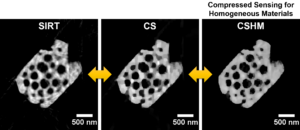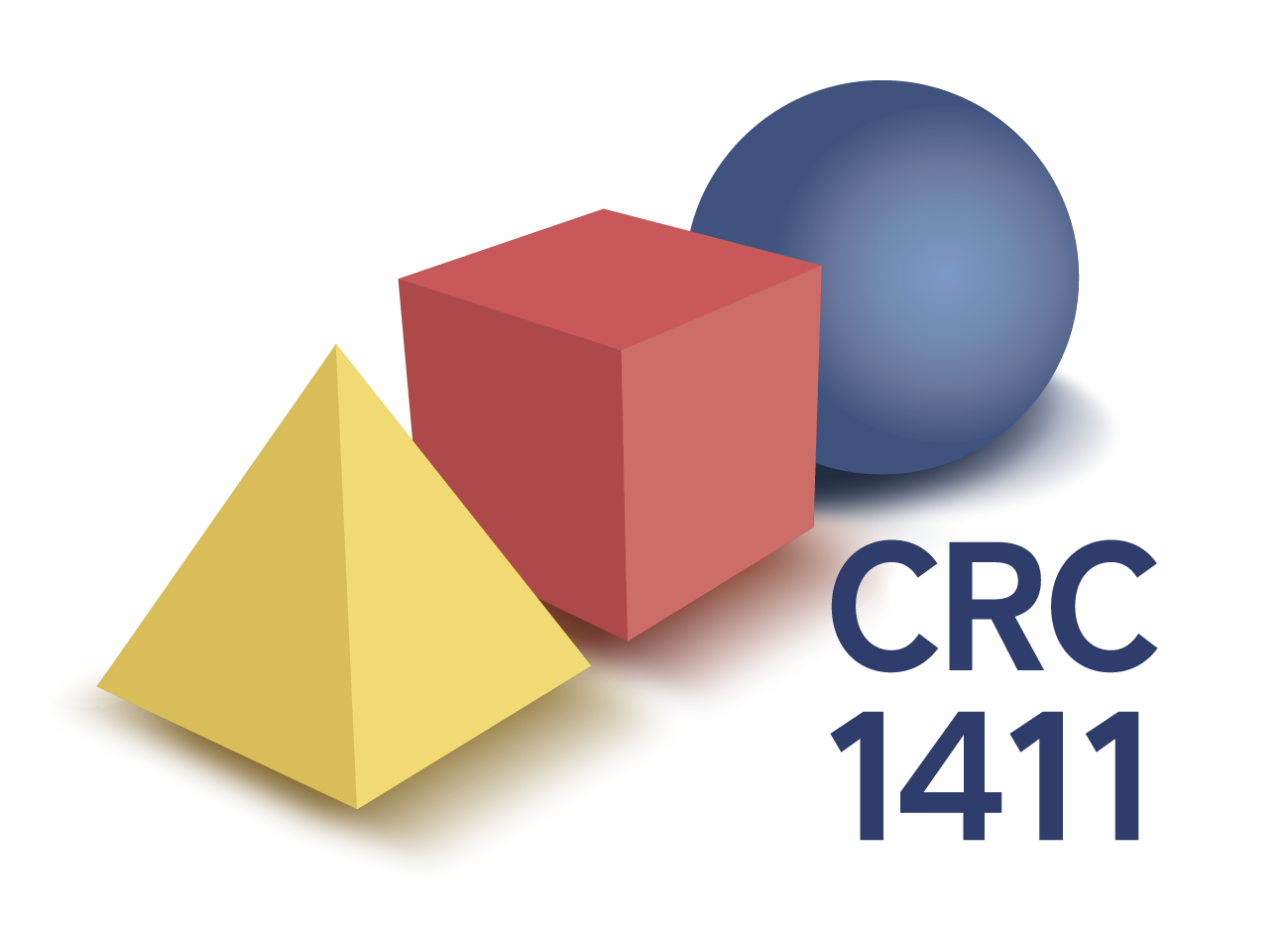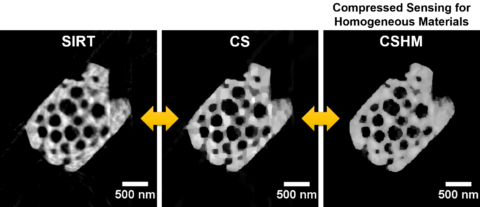Improving reconstructions in nanotomography via mathematical optimization
In a close collaboration of projects C01, C05 and D06, researchers of the CRC 1411 have introduced a new compressed sensing algorithm which uses mathematical optimization to improve the 3D reconstruction quality in nanotomography of homogeneous materials. The work has been published in the journal Nanoscale Advances (https://doi.org/10.1039/D3NA01089A).

Comparison of reconstructed slices through a macroporous zeolite particle using established algorithms and our new CSHM approach (reproduced from https://doi.org/10.1039/D3NA01089A)
Compressed sensing is an image reconstruction technique to achieve high-quality results from limited amount of data. In order to achieve this, it utilizes prior knowledge about the samples that shall be reconstructed. In this work, we include additional problem-specific knowledge for image reconstruction in nanotomography and propose further classes of algebraic inequalities that are added to the compressed sensing model.
The first consists in a valid upper bound on the pixel brightness. It only exploits general information about the projections and is thus applicable to a broad range of reconstruction problems. The second class is applicable whenever the sample material is of roughly homogeneous composition. The model favors a constant density and penalizes deviations from it. The resulting mathematical optimization models are algorithmically tractable and can be solved to global optimality by state-of-the-art available implementations of interior point methods.
In order to evaluate the novel models, obtained results are compared to existing image reconstruction methods, tested on simulated and experimental data sets. The experimental data comprise one 360° electron tomography tilt series of a macroporous zeolite particle (from project B01) and one absorption contrast nano X-ray computed tomography (nano-CT) data set of a copper microlattice structure, which was thankfully provided by our colleagues from Max-Planck-Institut für Eisenforschung GmbH (see https://arxiv.org/abs/2311.14018 for more information).
The enriched models are optimized quickly and show improved reconstruction quality, outperforming the existing models. Promisingly, our approach yields superior reconstruction results, particularly when only a small number of tilt angles is available.
The study was recently published in Nanoscale Advances:
S. Kreuz, B. Apeleo Zubiri, S. Englisch, M. Buwen, S.-G. Kang, R. Ramachandramoorthy, E. Spiecker, F. Liers, J. Rolfes, Improving reconstructions in nanotomography for homogeneous materials via mathematical optimization, Nanoscale Advances 2024, Advance Article, https://doi.org/10.1039/D3NA01089A

